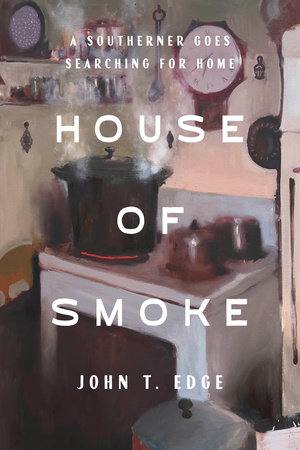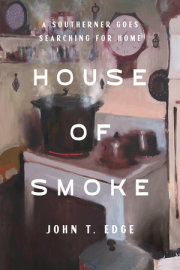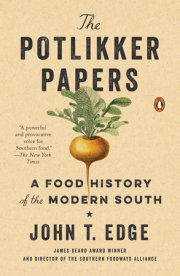Chapter OneKudzu and LiesGrade school friends on sleepovers were my first audience. I stood before them in our dining room, my mouth full of battlefield stats, to tell a story that began long before I was born, with people I claimed as family because their lives gave luster to mine. I received strangers, too. Drawn to our home by the historical marker out front, they drove our gravel drive, expecting to find costumed interpreters from Colonial Williamsburg. An only child who wanted an audience, I met them on the patio, climbed atop an overturned washpot, and leaned into their expectations.
The words on that marker, embossed in gold on a dull green field, told a story of Confederate valor that shaped my Georgia childhood. I recited the pedigree of Brigadier General Alfred Iverson as if he were a great-uncle from a splintered branch of our family tree. He was reserved and dignified, I told audiences. Beard trimmed, eyes piercing, he looked dashing in gray and quoted Shakespeare from memory. A man of character, Iverson knew victory and suffered loss.
Some of his biography I borrowed from the marker by the road. The rest came from the genealogy room at the public library in nearby Macon. Born in our home in 1829, Iverson accepted an 1855 lieutenant commission in the U.S. Cavalry. The next day, his father took the oath of office as a U.S. senator from Georgia. As father ascended, so did son. In March of 1861, young Alfred Iverson resigned the U.S. Army to join the Confederates, I said, my tone going low to reflect the seriousness of the moment.
He went down in defeat at Gettysburg, I told them, when the war could have gone either way. But he went down in honor, like the great Robert E. Lee. I didn’t know then how spectacularly Iverson failed that day. I knew precisely what a white boy growing up in Georgia in the 1960s and 1970s was supposed to know.
My best friend, Clinton Roberson, never heard me tell Iverson stories. From the time we were out of diapers, Clinton and I raced Hot Wheels through his swept dirt yard and floated toy boats in a brook on the far side of our drive. His mother, Elizabeth, worked for my mother, mopping our floors and washing our bedsheets. She cooked for me and Clinton in their house, near the center of our little town. But on lonely summer days it seemed like her real job was to deliver Clinton to my doorstep and then track our movements around the community for which he was named.
We imagined a lifelong friendship, like generations of white and Black boys before us. But then came integration. After my parents transferred me, age eight, to a white academy in nearby Macon, stories of Iverson became a kind of passkey to belong. And my friendship with Clinton became collateral damage.
Once I had the attention of an audience, I talked about the waning days of the Confederacy, when men marched home from battle without shoes and widows boiled dirt from smokehouse floors in search of the salt that dripped from hams. To offer a glimmer of hope for that hopeless cause, I told of a battle fought the year after Gettysburg at Sunshine Church, a chinked-log sanctuary ten miles from my house on a ridge near the village of Round Oak.
The Union outmanned Iverson that July day in 1864. But superior forces don’t win all battles. Men who fight on the land where they were born summon strength they don’t suspect. Iverson was said to know where creeks ran, where boulders blocked trails and gullies swallowed men and horses whole. Knowledge bred in his bones, I said, helped Iverson trick Union general George Stoneman into believing he was surrounded by Confederates.
Stoneman surrendered by waving the white tail cut from his dress shirt. Or maybe he held aloft his hat. Iverson captured the officer and five hundred of his men. When Stoneman learned that Iverson’s force was actually much smaller than his own, he sat on a log and cried. Or he cried on the back porch of our house. No one in Jones County seemed to agree on the details. But all knew Iverson was the hero of the Battle of Sunshine Church.
In the years that followed the Civil War, white Southerners made Iverson into an idol. Historical markers and monuments told of Iverson’s exploits. They went up in Athens near the arched entrance to the University of Georgia, and near Atlanta at the gate to a U.S. Army supply depot. They seemed to go up everywhere white Southerners needed reminders of the gallantry of the men who fought to defend a civilization built on the backs of Black people. They remained to remind Black Southerners of their so-called rightful place.
I didn’t know then to connect my family story to this bigger story. I didn’t yet understand that because our family adopted the Iverson family, I would have to answer for both. As a boy, all I knew was the good guys wore gray.
Mary Beverly Evans Edge and John Thomas Edge moved to Jones County in 1959. “We were in love with the idea of that house,” my father told me decades later. Cedars lined our property, marking the borders of our seven acres, blocking the roar of the busy two-lane that ran below the bluff where our house sat. Thatches of privet obscured our view of the single-wide across the road, where kudzu climbed out of a rain-washed gully to wrap the land in accidental topiary.
Gnarled oaks anchored our front yard, where my father napped on Sunday afternoons in a rope hammock. Opposite a bank of azaleas stood the old jail kitchen he had moved to our land after my mother talked him into buying the building to open an antique shop. He stripped chifforobes and I polished silver to stock the store she imagined.
Daddy and I spent Saturdays pulling up stretches of rotted flooring, eating sandwiches and stew from the barbecue joint up the road, listening to college football games on a box radio with a universe of silver dials. By the time the new boards were down, my mother lost interest in the shop. It’s too much trouble, she said. When my mother was in a sangria phase, everything was too much trouble.
You had to overlook a lot to think our house was grand. A foursquare elaborated with wainscoting, it was built as a dogtrot in 1821. A different windowsill rotted out each year. Tucked in a side window in the den, our sole air conditioner never really worked in my seventeen years under that roof.
A medusa of wires snaked from the fuse box. My father predicted electrical fires and feared lightning strikes. Our house is heart pine, my mother said. That means it’s kindling, my father said. Our house is historically significant, my mother wanted him to know. My father reminded her that the roof leaked around each of the four chimneys and pooled beneath the coal grates.
My bedroom connected to my parents’ bedroom through our only bathroom. When I was eight, my father convinced an architect friend to draw up plans for a second bathroom and a laundry room. Daddy bid out construction projects that came back with estimates we couldn’t stomach. Our house was a ruin, said the contractors. My mother told them it was a relic. She loved that turn of phrase. I can see her smiling, a goblet of sangria in hand.
My mother held court in the den, where Caroline Goode Holt Iverson had given birth to Alfred. Tucked in a bentwood rocker, she wrapped an orange-and-brown shawl around her bird-bone shoulders. Cigarette smoke haloed her bobbed hair. Lilliput, our Yorkipoo, sat at her feet. Smiling through rouge, she would reach for a silver goblet and talk of what the Yankees took from her Southland.
My mother spoke playfully, a lilt in her voice. She didn’t talk about saving Confederate money or restaging Pickett’s Charge. That was gauche. My mother’s attitudes about Southern honor and Yankee thievery lived in the gaps between her life and her dreams. The losses she compiled were societal. In the wake of the Civil War, they were inevitable, and they were conveniently out of her control.
The South was a proud and powerful force on the world stage, she said. Then came Reconstruction. In the aftermath of Federal occupation, the story of the South played like a tragedy. A pursed smile on her lips, my mother mourned that tragedy and delighted in the chance to recount the fall.
After the Creek Indians signed over the land between the Oconee and Ocmulgee rivers in 1805, she told me, the plantation belt that stretched across Middle Georgia became one of the leading cotton-producing regions in the nation. Newspapers from that era promised high yields to whites willing to fight Native tribes and haul Black men and women to places like Jones County to crop cotton in the virgin soil.
Clinton was the fourth largest town in the state by 1820. Jones was the second most populous county. The Clinton Academy soon incorporated to serve the sons and daughters of the white gentry. In 1830 Samuel Griswold of Jones County manufactured as many cotton gins as any firm in the nation.
Three hotels operated in Clinton back then, my mother reminded me. And a thespian society staged costumed productions of Hamlet.
The decline came as swiftly as the rise. River towns like Macon and Columbus grew in the years before the war. During the war, Federals burned houses and gins and other factory works. When the gentry of Clinton talked about that era, they talked about property. A century and a half later, that strikes me as logical, for the war was a fight over human property.
Copyright © 2025 by John T. Edge. All rights reserved. No part of this excerpt may be reproduced or reprinted without permission in writing from the publisher.







